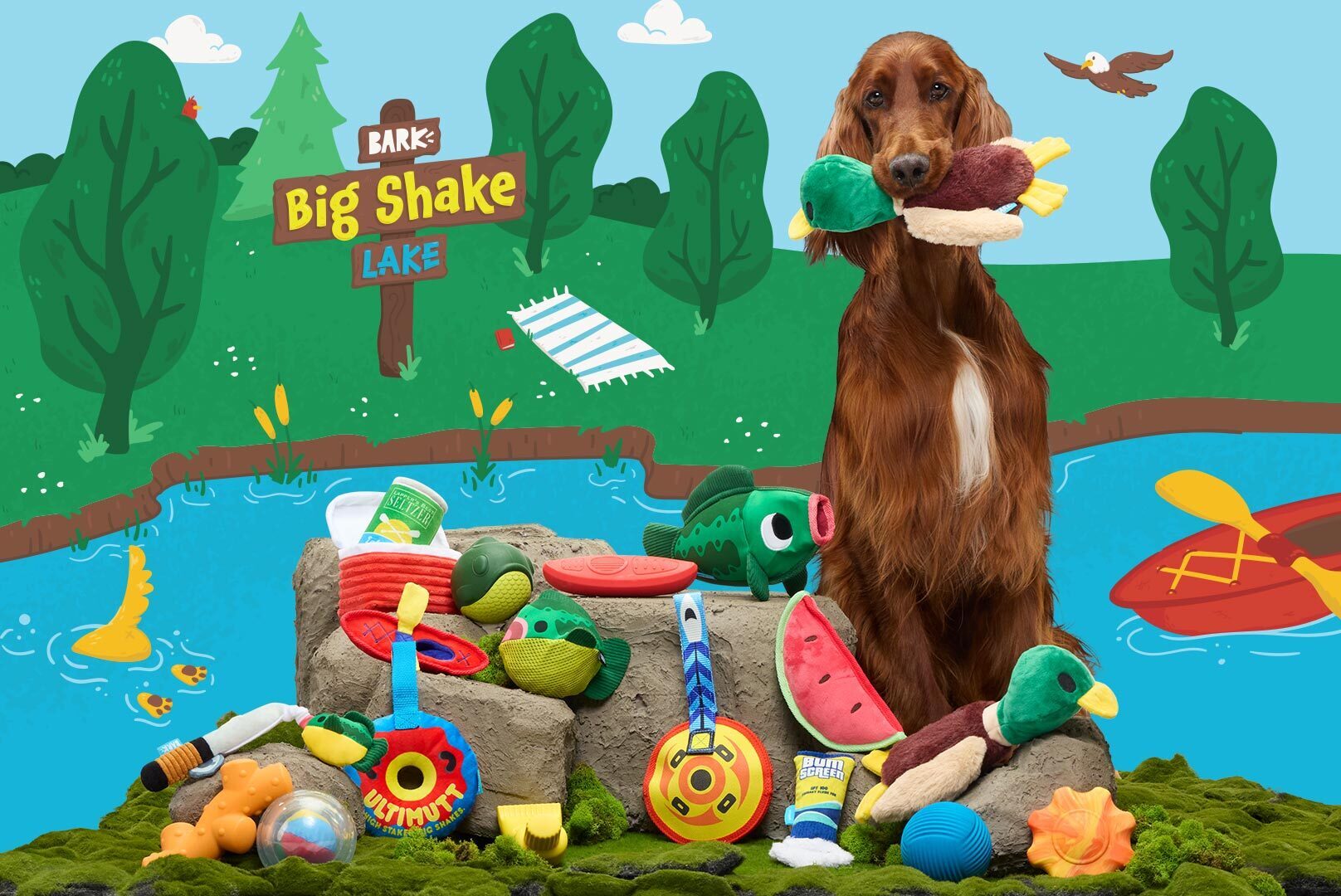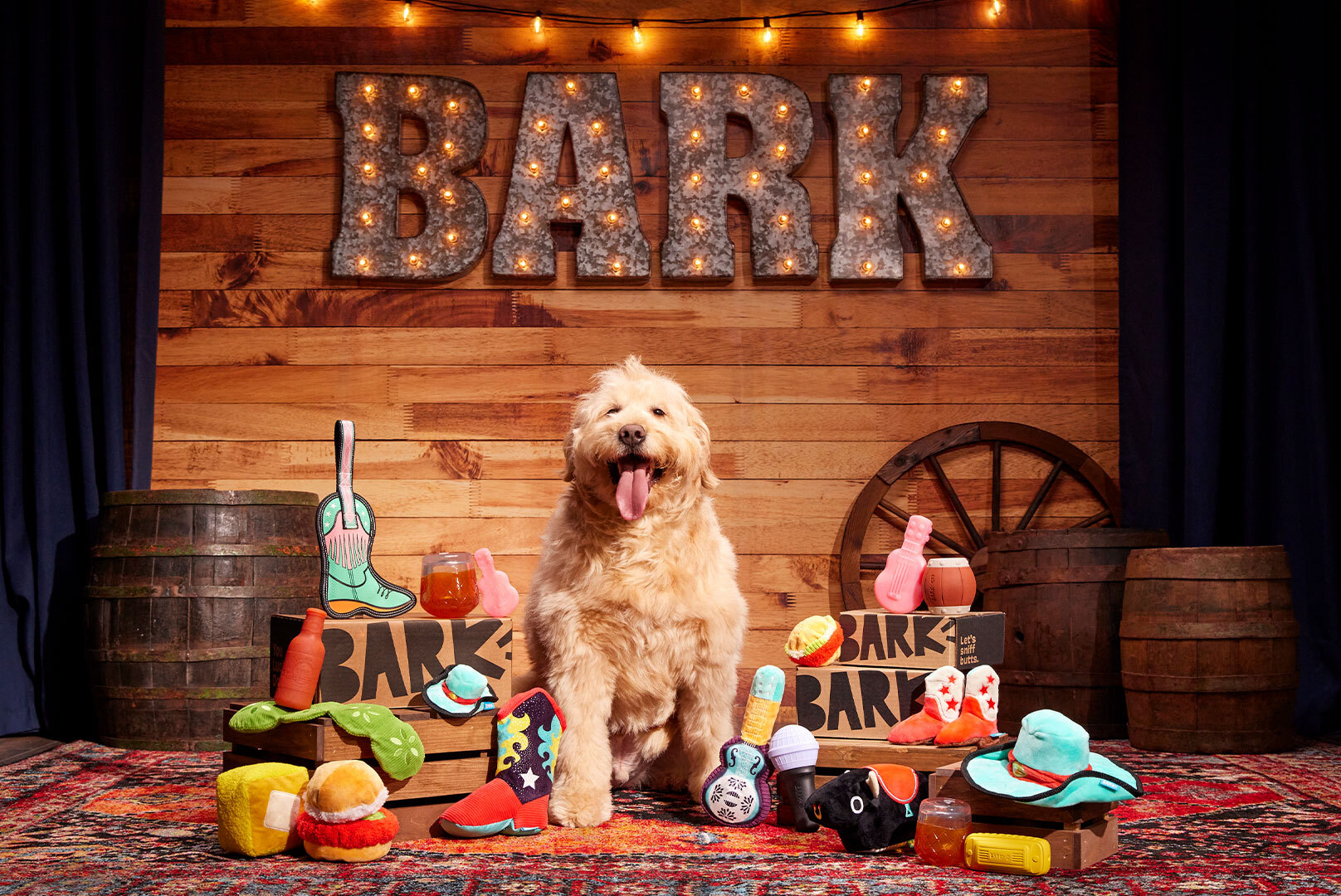For Pups With Short Attention Spans…
The lovable labrador retriever can grow up into a classic chonkster, but on average labs grow to about 21-24 inches in height, and 55-80 pounds in weight, with males being larger than females. Labs love to eat, so if you want your lab to stay in this range, make sure you watch what they eat.
From the moment you first laid eyes on your pint-sized furry friend, you knew it was meant to be. One glance at his Labrador puppy dog eyes, floppy velvet ears, and rambunctious spirit and you were a complete goner. Your Labrador Retriever puppy was going to be your new best bud.
What you may not have known as you proudly strutted him through your front door is how big he might be a year from now. So exactly how big do Labs get?
Labs are considered to be medium-to-large-sized dogs, and they typically range from 55–80 pounds as adults, depending on whether they’re male or female.1 So sit down and snuggle up to your fluffy ball of fur as we discuss how big your lab will actually get and give you some tips to help them maintain a healthy weight.
From Tiny to Titan: A Labrador Retriever’s Growth
You’ll find that your new Labrador puppy begins their curious yet mischievous phase at about three months old. At this age, they’re still small enough that you can comfortably tuck them under your arm as you remove them from the magnetic lure of your favorite pair of slip-ons.
On average, your lab puppy is about 25 pounds at 12 weeks, give or take a few pounds.2 And although their outgoing and inquisitive personalities won’t change much as they grow, their size certainly will.
While there’s no one-size-fits-all growth chart for this dog breed, we can share this little nugget of information. During their first year of life, they grow—and fast. One day you’re giggling at a tiny tangle of fur with giant paws; the next, you’re looking at a hefty heap of fur lying on you, only to realize you’re raising a lap dog that definitely doesn’t fit in your lap.
But how big do labs get?
Let’s break it down by height and weight:
Adult Height
By one-year-old, your Labrador pup will have reached their peak in terms of height:1
- A female Lab typically stands at a proud height of 21.5–23.5 inches tall.
- A male Lab is often slightly taller, at 22.5–24.5 inches.
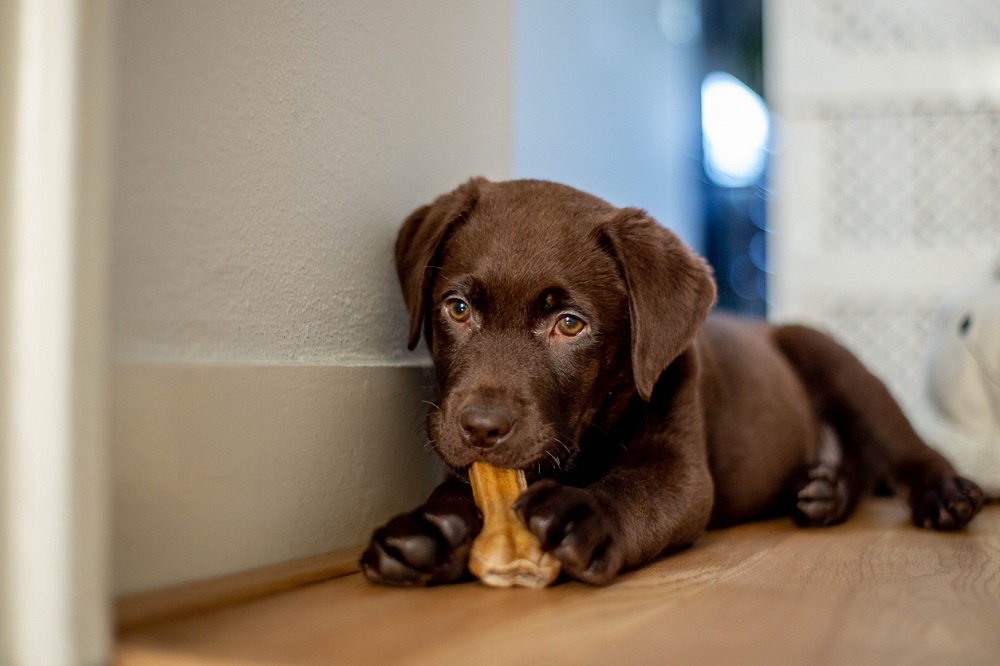

Adult Weight
Just because your Labrador pup reached its maximum height at one year doesn’t mean they’re done growing. On the contrary—they continue to fill out and become the robust playful pooch they’re meant to be at about two years old.
Many factors influence your adult dog’s weight, including their diet, amount of daily exercise, genetic makeup, and gender. Generally speaking, here’s how big you can expect the average adult Labrador retriever to weigh:1
- A female lab usually weighs approximately 55–70 pounds.
- A male lab weighs around 65–80 pounds due to their slightly larger height and frame.
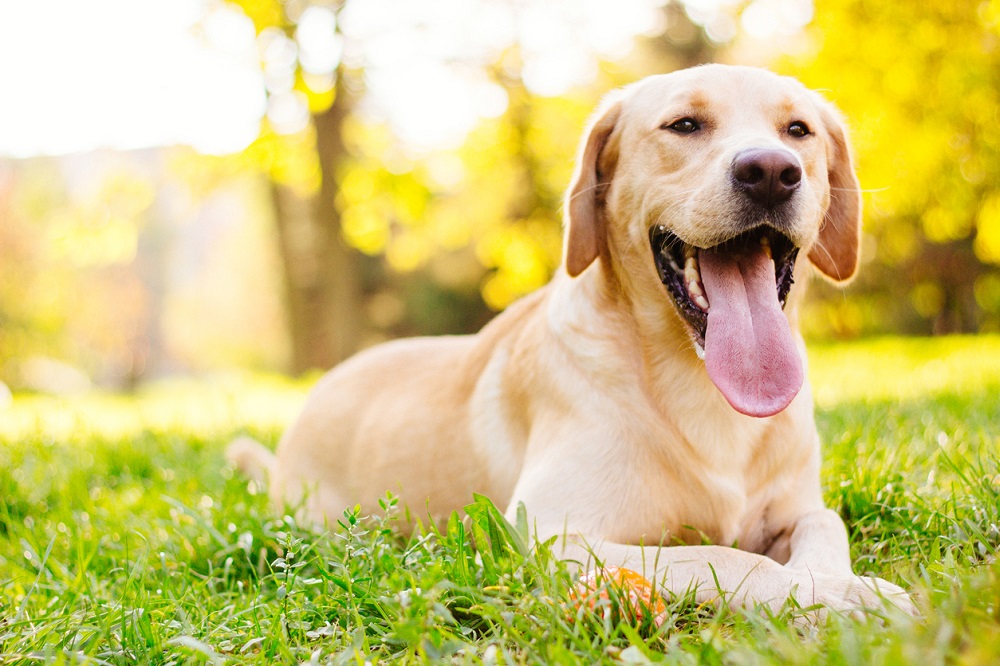

How To Help Your Lab Maintain a Healthy Weight
Labs may not be considered the largest breed of canines, but that doesn’t stop many of them from gaining an extra few pounds—or fifteen—throughout their lives. Known for their susceptibility to obesity, they find themselves at risk for other Labrador retriever health issues if they’re overweight, including:3
- Heart and liver disease
- Skeletal problems
- Joint inflammation
- Arthritis
Thankfully, you can prioritize their health before obesity becomes an issue. From stimulating exercises to monitoring their food intake, we’ve compiled a list of four tips and tricks to help your favorite furry friend maintain a safe and healthy weight through puppyhood and beyond.
#1 Focus on Controlled Feeding
From the moment you welcome your pup into your home, one of the best things you can do for them is incorporate controlled feedings. Controlled what now?
While the idea of controlling how much they eat may sound rigid, dogs are natural scavengers. If they’re bored and see uneaten food in their bowls, on the floor, or—gasp—in your bowl, they’ll want to eat it—whether they’re hungry or not.
Because of their love for all nomm-able foods, controlling your lab’s habit of having the munchies will bring you one step closer to maintaining a healthy weight.
Controlled feeding is a daily routine that includes:
- Choosing specific times of day to feed them (usually morning and night)
- A predetermined amount of food to give them during each feeding
Of course, you aren’t expected to feed them the same amount at one year of age as you would at three months.
You can ask your vet for recommendations or follow the instructions on the dog food label to ensure you’re feeding them the appropriate amount for their age. As they grow, you can slowly bump up the increments until they reach adulthood.
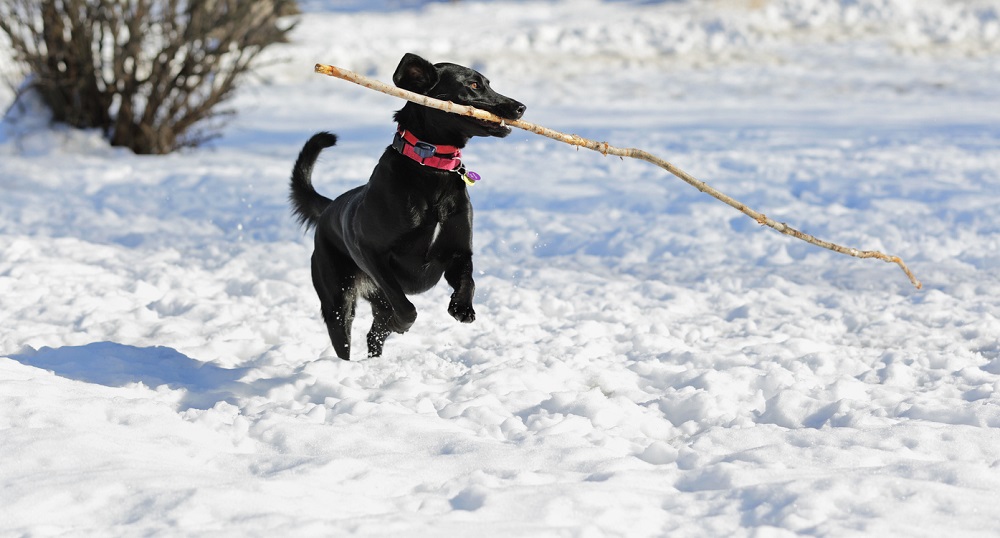

#2 Choose a Quality Dog Food
You know the saying quality over quantity? It applies here, too. In addition to carefully measuring out your pup’s food each day, it’s crucial that you’re offering them the filet mignon of food—not the ground chuck.
And unlike cats, who thrive on an all-meat diet, dogs have a more regal palette (unless you count the time they tried to eat that questionable blob on the street last week). So after checking for chicken, beef, or other types of meat as the first item on the ingredient label, you can also search for ingredients like vegetables, grains, and fruits.
It’s also important to remember the cardinal rule: all dog foods are not created equal. According to the American Kennel Club, each dog has its own distinct dietary needs.4 That means small breeds require different ingredients than large dogs and puppies need different nutrients than full-grown dogs. The same can be said for labs.
Luckily, BARK curates dog food for multiple dog breeds, from small to large (and definitely all the ones in between). Whether your lab is a puppy or an adult, we’ve handcrafted the perfect recipe for their age and stage in life, complete with chicken, fresh whole grains, and L-carnitine to help them maintain a healthy weight.
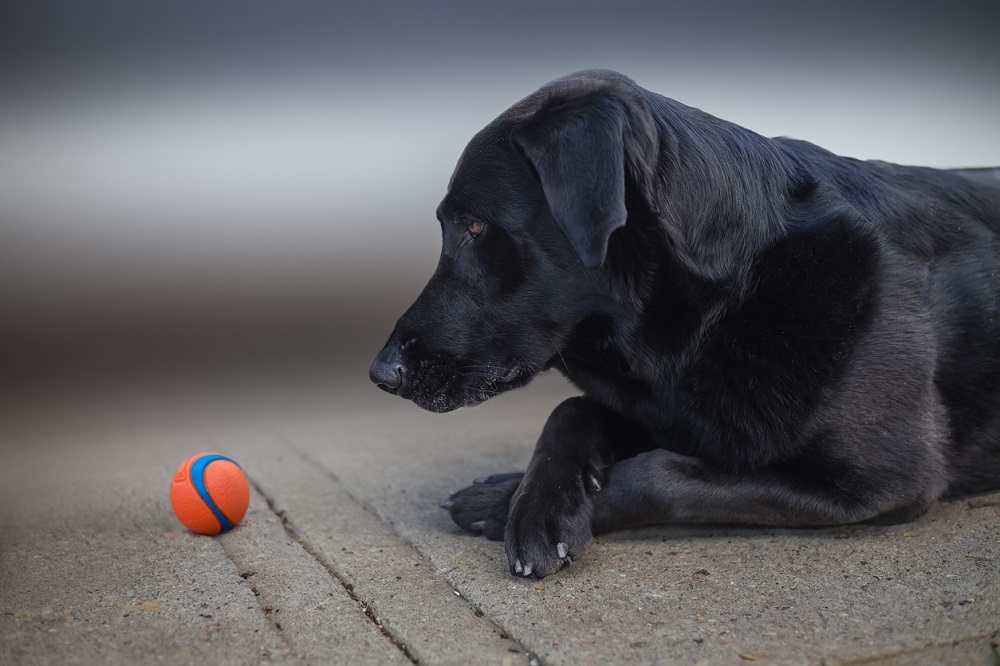

#3 Incorporate Daily Exercise
If you let your lab loose, they’ll be happy to show you just how many zoomies they’ve stored up for you. Whether you take them for a quick jaunt around your neighborhood or a thrilling field trip to the local dog park, we’re sure they’re game.
Luckily, a solid daily dose (or two) of exercise is exactly what the doctor ordered in regard to maintaining a healthy weight. In addition to the classic walk-and-fetch routine (they are retrievers, after all), here are some fun and exciting ways to spice up your pup’s exercise life:
- Brush up on agility training – Are labs smart? Labs aren’t just active, they’re intelligent and inquisitive. They can have their cake and eat it too with agility training, which works their mind and body with a fun course containing obstacles like tunnels, seesaws, tire jumps, and more.5 Beware—this is an entertaining and addictive activity—and not just for your pup.
- Chase the laser pointer – Contrary to popular belief, laser pointers aren’t just for cats. Your pup can have just as much fun with it—possibly more! If you’re looking for a quick way to unleash some of their energy indoors, simply whip out your laser pointer, show them the red dot, and move it around the floor as they follow (and potentially chase) it around the room.
- Play hide and go treat – Though your dog would happily go bonkers for a rousing game of hide and seek, you can provide them with the ultimate surprise by offering to play hide and go treat from time to time. Hide two or three of their healthy treats around the house in places they’ll need to do a little digging (pun intended) to find them—like under a rug or behind a pillow or chair. They’ll have a ball while burning up some energy as they sleuth for their favorite treats.
#4 Schedule Routine Vet Visits
As helpful as it can be to control their food intake and ensure they’re exercising regularly, nothing beats a good old-fashioned visit to the veterinarian’s office. You can schedule a yearly wellness visit with your vet, where your pooch will be the star of the show.
They can expect five-star treatment (although they may not see it the same way), where they’ll receive the following assessments and shots:
- A routine physical – A physical usually involves checking your pup’s vitals and weight and generally ensuring they’re in tip-top shape.
- Booster shots – Yearly shots include ones for rabies, canine parvovirus, distemper, and canine hepatitis.6
However, sometimes once a year isn’t enough. If you notice your pup doing any of the following, it’s probably time to schedule another appointment:7
- Eating and drinking more or less than usual
- Losing a noticeable amount of weight
- Being lethargic or showing little interest in participating in his usual activities
Even if you just feel like something isn’t right, it never hurts to take them in for a checkup to rule out any issues.


Show Your Lab Some Love With BARK
Whether it’s just you and your pooch or you have a house full of cheerful children, a Labrador Retriever is the perfect size for either scenario. They’re not too big, not too small—they’re just right. Not to mention, they have a heart of gold, they’re loyal, and making you happy is what makes them most happy—it’s a win-win for everyone.
With BARK, you can show your lab just how much you love them—with delectable dog food crafted just for them. Whether your Labrador dog is a yellow lab, chocolate lab, silver lab, English lab, white lab, or any other type, they deserve only the best dog food. Made with a special blend of wholesome ingredients and vitamins, they’ll go gaga for the taste and you’ll have peace of mind knowing they’re fueling up with high-quality food to help them maintain a robust and healthy weight.
Sources:
- AKC. Labrador Retriever. https://www.akc.org/dog-breeds/labrador-retriever/
- Pawlicy. Labrador Retriever Growth & Weight Chart: Everything You Need To Know. https://www.pawlicy.com/blog/labrador-retriever-growth-and-weight-chart/
- Pet MD. Obesity Is a Common Problem in Laborador Retrievers. https://www.petmd.com/dog/care/evr_dg_obesity_problem_in_dogs_labrador_retrievers
- AKC. How To Choose The Best Dog Food. https://www.akc.org/expert-advice/nutrition/best-dog-food-choosing-whats-right-for-your-dog/
- AKC. Agility. Getting Started. https://www.akc.org/sports/agility/getting-started
- Essentials Pet Care. What Vaccines Do Dogs Need Yearly? https://essentialspetcare.com/what-vaccines-do-dogs-need-yearly/
- AKC. When Should I Call the Vet? https://www.akc.org/expert-advice/health/should-i-call-my-dogs-vet/



